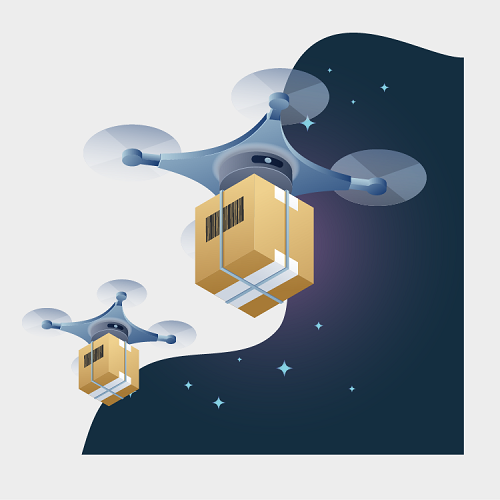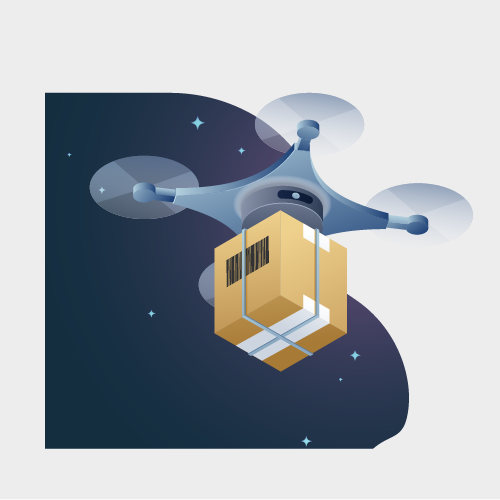THOUGHT LEADERSHIP
Nicolaus Radford is the CTO of Houston Mechatronics, the maker of an underwater robot called Aquanaut, and the founder of Jacobi Electronic Motors. Now an entrepreneur and inventor, Radford is an engineer who spent 14 years at NASA Johnson Space Center where he ran the humanoid robotics research group before joining the private sector.
Whether they’re assembling vehicles in huge manufacturing plants or entertaining us in dystopian thrillers, robots have been around for decades. Yet despite our familiarity with the idea of machines performing work on our behalf, the word “robot” still holds the power to rankle. That’s because many people have mixed feelings about automating work that has long kept humans gainfully employed.


Using Robots To Deliver Services
Whether you're talking drone deliveries from Pizza Hut or robo-cops on security detail, there’s a pending explosion in the population of service robots worldwide. My company, Houston Mechatronics, is a robotics-as-a-service company, for example, that builds intelligent robots that can perform undersea maintenance.
Our robot, Aquanaut, represents a paradigm shift in the way people conduct work underwater. There are cities that have been built below the sea that need routine maintenance. These cities pull oil and hydrocarbons out of the ground. They're collected onto a ship; the ships return to port with oil, which is then refined into gas and other products. Right now, if you want to conduct work underwater, you use a remotely operated vehicle (ROV) connected by extension cord to the ship, which can cost on the order of $100,000 per day to use—a cost that can be prohibitive.
We can’t use Wi-Fi or other RF communications to control Aquanaut, because water attenuates the signal too fast. But we discovered that controlling a robot with an acoustic modem works just fine. So using mechatronics—a term I use to describe robotics, software, and mechanics all working in harmony—we have eliminated the need for the ship and the extension cord, completely changing the dynamics and economics of undersea operations. This is just one example of robotics as a service. Let’s take a look at a few more.
- Transportation. Vehicles are quickly moving toward constituting a service-based industry. The day may come when individuals will tend not to own their own vehicles, but instead “call up” a self-driving car on demand. You might consume those services from the likes of Lyft, Uber, taxicabs, and other service companies yet to be founded. The structured part of the transportation industry is the highways, streetlights, stop signs, and other carefully planned infrastructure that stays more or less static. The unstructured component is who will use the infrastructure and when. These variables are random and unknown, so this is where much of the vehicle communications work today is focused.
- Healthcare. A hospital, with its hallways and its standardized beds, is a good candidate for automated bed transport and food service delivery to patient rooms. Currently, there’s a hospital technician who comes in, grabs your bed, and wheels you down to X-ray. Why isn't your bed taking you there on its own? The hospital is a semi-structured environment. The unstructured part is that there are people walking around the hallways and rolling by in wheelchairs. The structured part is the hallways and the building map, which are definable. It's known a priori that you can model and then seed robot navigation algorithms to get from point A to point B fairly easily, and these are applications you're going see pop up quickly.
- Security. Security is an area where robotics services are emerging. There's a security company called Knightscope with a mission to predict and prevent crime using autonomous robots, analytics, and engagement. The company claims on its website that crime creates more than a $1 trillion negative impact on the U.S. economy every year, and Knightscope’s stated mission is to cut that in half.
What’s Needed To Empower Robots?
Huge computational power is required for robots to be able to perceive their environment and make real-time decisions based on what they learn. In this way, many robots can be considered “edge” computing devices. A lot of mobile robot applications, for example, ingest massive amounts of environmental data, such as LiDAR distance measurements and sensor and scanner data, which they need to interpret.
Currently, a lot of robots get in trouble with over-driving their headlights, so to speak. The dynamics of the motion of the robot start outrunning its ability to tell itself not to hit something. This situation needs to improve, and that partly involves having an ecosystem of mobile robot platforms learning from themselves, updating their algorithms, and forwarding them to the cloud for aggregation. Now you have aggregated information available in the cloud that helps the whole robot ecosystem learn. All of that is taking place today, and that is what the tipping point is going to be to really kick off the ubiquity of robotics around us.
Becoming More Civilized
I think it's the goal of every society to become more civilized, in whatever shape that takes. And I think creating more civilized societies that can do more good in the world requires robotics and automation. Doing more good can involve robotic advances in medicine, for example, and conquering space so that we can all get off this planet if the day comes when we need to do so.
All this said, I think there’s a universal truth that humans will always need to labor for something. For that reason, it’s unlikely we’ll ever create a utopian, automated society in which everything is done for us. That would run contrary to human nature. I believe there will have to be a healthy balance between the human labor we actually enjoy and require to stay healthy and the need for automation to advance civilization in positive, productive ways.

"Now you have aggregated information available in the cloud that helps the whole robot ecosystem learn. All of that is taking place today, and that is what the tipping point is going to be to really kick off the ubiquity of robotics around us."
Additional Content

ARTICLE
The Fallacy of Impossible

Article
Retail Reshapes for the Modern World






